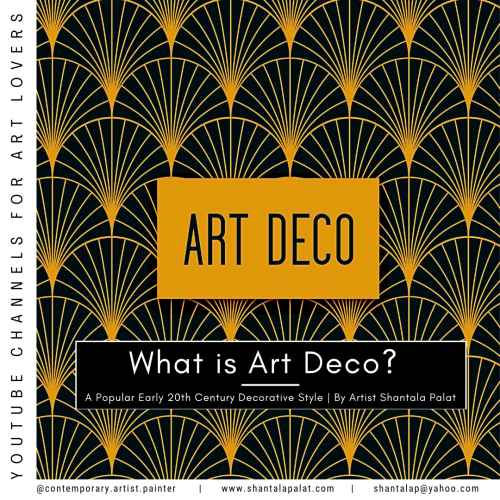What is Art Deco? A Popular Early 20th Century Decorative Style
- Shantala Palat
- 7 days ago
- 2 min read
Art Deco is one of the most distinctive and influential design movements of the 20th century. Emerging in the 1920s and flourishing through the 1930s, it reflected the optimism, glamour, and modernity of a world stepping into a new industrial age. Characterised by bold geometric patterns, rich colours, and luxurious materials, Art Deco transformed everything from architecture and interior design to fashion, jewellery, and even automobiles. It represented elegance with a futuristic vision — a celebration of progress and sophistication, shares Shantala Palat, who is India’s leading contemporary artist and painter.

What are The Origins of Art Deco?
The term “Art Deco” comes from the Exposition Internationale des Arts Décoratifs et Industriels Modernes, held in Paris in 1925. This international exhibition showcased modern decorative arts and introduced the world to a fresh, forward-looking style. Art Deco evolved as a response to the flowing, organic designs of the earlier Art Nouveau movement. Instead of curving lines and floral motifs, Art Deco embraced symmetry, geometry, and streamlined shapes, reflecting the machine age and industrial progress of the early 20th century.
Key Features and Design Elements
Art Deco design is instantly recognisable for its bold geometric patterns, zigzags, chevrons, stepped forms, and sunburst motifs. Materials were chosen to convey luxury and innovation — chrome, glass, lacquer, ivory, stainless steel, and exotic woods were commonly used. Colour palettes often featured deep, rich tones like gold, black, silver, emerald, and royal blue, symbolising wealth and sophistication.
In architecture, Art Deco buildings often featured clean lines, vertical emphasis, and ornamental details that blended modern engineering with artistic flair. Iconic examples include the Chrysler Building in New York and the Palais de Chaillot in Paris. These structures showcased how Art Deco could merge functionality with aesthetic grandeur.

Influence Across Design Fields
Art Deco’s influence extended far beyond architecture. In fashion, it inspired sleek, elegant silhouettes and accessories featuring geometric shapes and luxurious materials. Jewellery designers like Cartier and Van Cleef & Arpels popularised platinum, diamonds, and vibrant gemstones in symmetrical patterns. Furniture during this era showcased streamlined forms, glossy finishes, and rich veneers, blending craftsmanship with machine-made precision. Even poster art and graphic design adopted Art Deco’s style, with bold typography, stylised illustrations, and dynamic layouts that conveyed energy and movement.

Cultural and Historical Impact
The Art Deco movement mirrored the social changes of its time — an era of technological innovation, economic prosperity, and cultural transformation. It was the age of jazz, cinema, and skyscrapers, and Art Deco captured the spirit of modern life. However, the Great Depression of the 1930s and World War II eventually shifted design trends toward simpler, more functional aesthetics, marking the decline of Art Deco’s opulent style.

Legacy of Art Deco
Even today, Art Deco remains a timeless symbol of elegance and modernity. From restored buildings and vintage furniture to contemporary designs inspired by its motifs, the style continues to fascinate designers and collectors alike. Its perfect blend of glamour, craftsmanship, and innovation ensures that Art Deco’s influence endures — a tribute to an era when art and industry met in perfect harmony.
Art Deco wasn’t just a style — it was a statement of confidence, progress, and beauty that still inspires the world nearly a century later.





























Comments